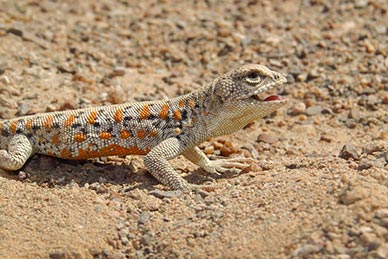- With the funding of a Fondecyt Postdoctoral Project 2016, Dr Baptiste Darbois, professor at the Faculty of Science of Universidad de Santiago, will be able to accurately determine how lizards move in granular soils in order to produce results that allow to create a robot able to move easily in different types of soil.
With the funding of a Fondecyt Postdoctoral Project 2016, Dr Baptiste Darbois, professor at the Faculty of Science of Universidad de Santiago, will be able to accurately determine how lizards move in granular soils in order to produce results that allow to create a robot able to move easily in different types of soil. This would mean a significant contribution to robotics.
Based on previous research that found that once lizards dive in the sand, they move by wriggling their bodies and not by using their legs, Dr Darbois will study the interaction between a vibrating elastic structure and the granular environment.
The Fondecyt Postdoctoral project (3160167) is called “Locomoción ondulatoria de nadadores suaves dentro de los medios granulares.”
Experimental challenge
The experimental challenge of the study is to control the movement of grains and the forces they undergo when lizards move. This would help to establish guidelines for developing robots able to adapt themselves to different environments. The way of moving of different animals has inspired engineers in this field.
“We expect the compression produced by lizards’ undulating movements in the desert’s sub-surface to help us to develop efficient robots by incorporating this mechanism,” Dr Darbois explained.
Likewise, professor Darbois intends to develop, in the long term, a robot based on the best features lizards show when moving in a granular environment.
“Through this project, we expect to define the optimal conditions: the dimensions, elasticity, frequency and amplitude of vibrations to move forward in waves through a granular environment,” the researcher said.
The relationship between lizards and the development of robots is not odd; on the contrary, it can benefit technological development and improve people´s quality of life. For example, it can be used in critical situations.
“With regard to its applications, developing robots able to efficiently move in granular environments could help to detect anti-personnel mines in the deserts and find people trapped under avalanches,” Dr Darbois concluded.
Translated by Marcela Contreras



